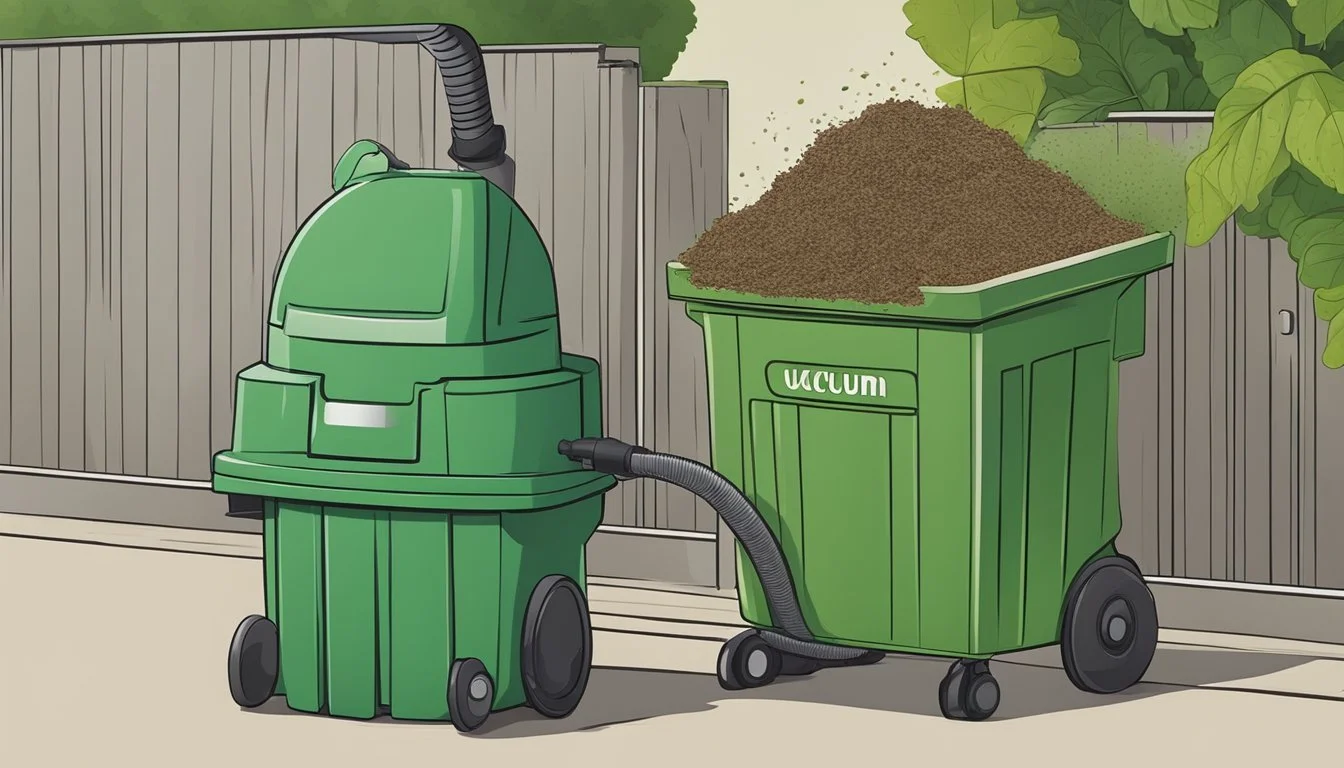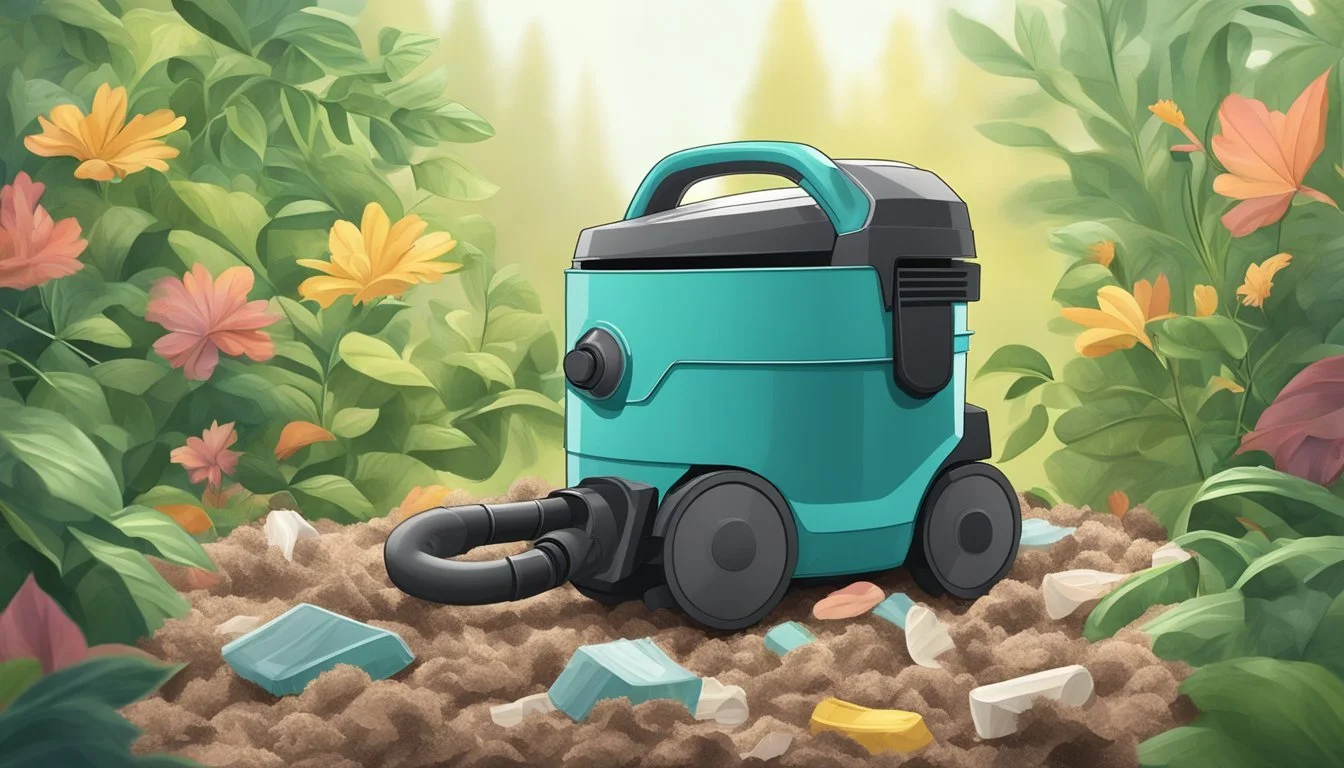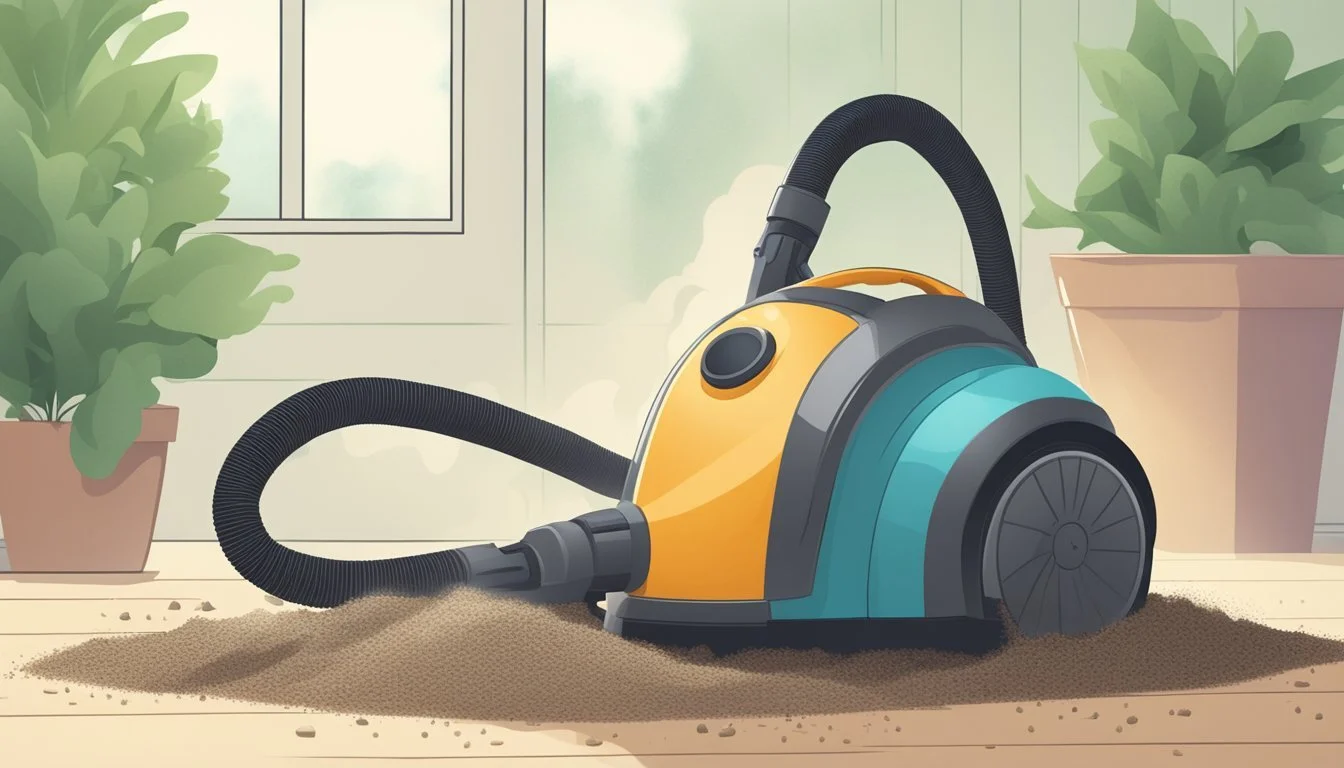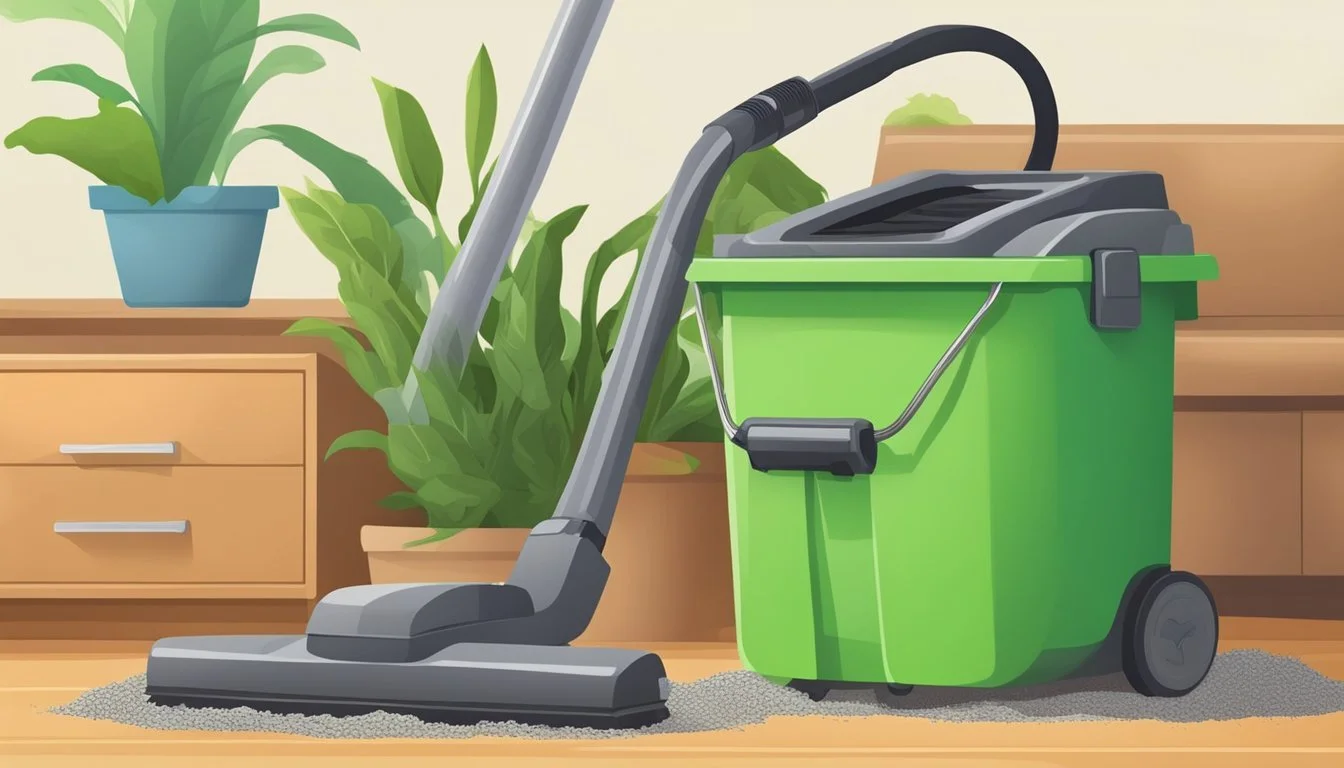Can You Compost Vacuum Cleaner Dust?
Understanding Its Impact on Composting
Composting has gained attention as an environmentally friendly method for handling organic waste. It entails the biological decomposition of organic materials to produce nutrient-rich soil, which is beneficial for gardening and reducing landfill waste. Many households now routinely compost kitchen scraps, yard waste, and other biodegradable materials. However, the question of whether vacuum cleaner dust can be included in the compost heap prompts a nuanced discussion.
Vacuum cleaner dust is a mix of substances, primarily consisting of human hair, skin cells, pet dander, and fibers from textiles. Given that these are organic matter, it might seem fitting to add them to the compost. Nevertheless, vacuum cleaner dust also contains small particles from synthetic materials, like plastics, that are not suitable for composting. These particles could introduce contaminants to the compost mix, potentially harming the microbial balance needed for proper decomposition.
When considering the inclusion of vacuum cleaner dust in compost, it is essential to scrutinize the content carefully. Materials free from synthetic components, like metals or plastics, can be composted. This ensures that the compost remains a healthy, nutrient-rich addition to one's garden, promoting soil fertility without inadvertently introducing pollutants. Hence, composting vacuum cleaner dust can be feasible but demands cautious assessment of its composition.
Understanding Composting
In this section, we'll dissect the critical elements of composting, focusing on the foundational principles and specific methods that are essential for effective decomposition and creation of fertile soil through composting.
Basics of Composting
Composting is the natural process of recycling organic matter, such as leaves and food waste, into a valuable fertilizer that can enrich soil and plants. The heart of composting is the decomposition process, which is carried out by microorganisms such as bacteria and fungi. These microbes break down organic materials into simpler substances, resulting in a nutrient-rich product known as compost or humus.
The Role of Carbon and Nitrogen
The balance of carbon and nitrogen is fundamental to the composting process. Microorganisms require carbon for energy and nitrogen for protein synthesis. The optimal ratio for composting is typically around 25-30 parts carbon to 1 part nitrogen.
Carbon-rich materials (often referred to as "browns") include:
Dry leaves
Straw
Wood chips
Nitrogen-rich materials (known as "greens") consist of:
Grass clippings
Food waste
Coffee grounds
Common Compostable Materials
A variety of natural materials can be composted, turning what would be waste into a valuable soil amendment. Common compostable materials include but are not limited to:
Kitchen scraps like fruit and vegetable peelings
Coffee grounds and tea bags
Yard waste such as leaves and grass clippings
Organic, non-synthetic materials such as paper and untreated wood
Composting Methods
There are several methods to achieve effective composting, each with its own set of requirements for aeration, moisture, and temperature control.
Compost bins provide a contained environment and can be used to maintain proper conditions.
Compost piles are a more open method, requiring regular turning to ensure adequate oxygen.
Both methods require maintenance of moisture and aeration for the microorganisms to thrive and efficiently decompose the organic material into compost.
Vacuum Cleaner Dust Composition
Understanding the composition of vacuum cleaner dust is crucial to determining its suitability for composting. This section breaks down what typically constitutes household dust and evaluates the specific contents of vacuum dust gathered by vacuum cleaners.
Typical Household Dust
Household dust is a mix of particles that accumulate in living spaces. It predominantly consists of:
Human skin flakes: The majority of dust is dead skin cells shed by humans.
Hair: Both human and pet hair contribute to household dust.
Fibers: Natural and synthetic fibers from carpets, clothing, and upholstery add to the dust.
Lint: Tiny fabric particles known as lint are also present.
Dirt: Small soil particles tracked indoors contribute to dust.
Dust mites: Microscopic organisms that feed on organic detritus.
Allergens: Dust can contain pollen, pet dander, and other allergens.
Evaluating Vacuum Dust
Vacuum dust portrays a more complex profile as it collects debris from multiple sources. The composition of vacuum cleaner dust includes:
Carpet and flooring particles: Tiny debris from various flooring materials.
Synthetic fibers: Fibers from synthetic carpets, clothes, and other materials.
Non-organic materials: Depending on the household, there may be plastic or metal shards not suitable for compost.
Organic matter: A significant portion includes biodegradable matter such as human hair, pet hair, and skin flakes.
When considering vacuum dust for composting, one must evaluate the presence of synthetic and non-organic materials, as they can negatively impact the composting process.
Is Vacuum Cleaner Dust Compostable?
Vacuum cleaner dust may contain both compostable and non-compostable materials, the compostability largely depends on its composition.
Organic vs. Synthetic Debris
Vacuum cleaner dust typically includes a mix of organic matter such as hair, dead skin cells, and fabric fibers. Organic materials are biodegradable and can be broken down by microorganisms, making them suitable for composting. However, dust can also contain synthetic materials like plastic and synthetic fibers from carpets, which are non-compostable and can disrupt the decomposition process in a compost environment.
Potential Contaminants
Beyond the mixture of organic and synthetic debris, vacuum cleaner dust might hold various contaminants. These may include chemicals, pathogens, or harmful bacteria that are not suitable for a compost ecosystem and can potentially harm the environment. Additionally, the presence of synthetic materials, plastics, and other non-biodegradable elements can introduce toxins and resist breakdown, further complicating the composting process and potentially creating an environment for unwanted fungi or other organisms.
Environmental Considerations
In the context of composting vacuum cleaner dust, environmental considerations primarily revolve around the benefits of composting and its role in waste reduction. These practices contribute to a sustainable ecosystem by enhancing soil structure and reducing reliance on chemical fertilizers.
Benefits of Composting
Composting vacuum cleaner dust can be eco-friendly, improving soil health and fertility. Organic waste like hair, fibers, and dust can often be broken down biologically, contributing to nutrient-rich soil. This, in turn, supports gardening and agriculture by providing plants with essential nutrients naturally, which may reduce the need for chemical fertilizers. Moreover, by incorporating vacuum cleaner dust into compost, homeowners can improve soil structure, making it better at retaining water and supporting plant roots.
Composting and Waste Reduction
Effective waste management strategies, such as composting, help to reduce waste that ends up in landfills. By composting vacuum cleaner dust, one is diverting a portion of their household waste from the landfill, which can help decrease greenhouse gas emissions. Composting is an integral part of creating a sustainable waste management system, as it repurposes organic waste into an asset for the environment, thereby closing the loop on household waste.
Practical Steps for Composting Vacuum Dust
Composting vacuum cleaner dust is feasible, but requires careful sorting and integration to maintain the balance of the composting process.
Pre-Composting Segregation
Before adding vacuum dust to a compost pile, it is essential to ensure that the contents are free from synthetic materials. Dust collected from vacuum cleaners often includes human and pet fur, skin flakes, and lint, which are compostable. However, it is crucial to separate any plastics, metals, or synthetic fibers, which do not break down during composting. Using a vacuum with specialized filters should also prompt scrutiny, as these filters can trap microscopic pollutants that shouldn't be added to compost.
Incorporating Vacuum Dust into Compost
When adding vacuum cleaner dust to the compost bin, the following steps should be observed:
Mix Carefully: Sprinkle the vacuum dust thinly over the compost pile to permit air and oxygen to circulate, aiding aerobic decomposition.
Balance the Materials: Ensure the mixture is balanced between 'greens' (nitrogen-rich materials) and 'browns' (carbon-rich materials), with vacuum dust generally contributing to the browns.
Control Moisture: Vacuum dust tends to be dry, so monitor the compost moisture level, maintaining it at 40-60%. Add water if the pile is too dry or dry materials if it is too wet.
Aerate Regularly: Turn the compost pile periodically to improve aeration, distribute moisture, and accelerate decomposition.
Monitor Temperature: The temperature of the compost pile should increase as the materials break down. High temperatures indicate active composting, and if temperatures dip, it may require turning or adjusting the material balance.
By adhering to these guidelines, composting vacuum cleaner dust can enhance the composting process without introducing contaminants.
Common Issues and Solutions
Composting vacuum cleaner dust necessitates careful consideration to avoid health risks and contamination from non-compostable materials. By taking a methodical approach, one can successfully incorporate this waste into compost while mitigating potential problems.
Mitigating Health Risks
Pathogens and allergens are notable concerns when adding vacuum dust to compost. To reduce the risk, one should:
Ensure proper breakdown: Compost piles must maintain high temperatures (between 130-160°F) to kill harmful bacteria and fungi.
Monitor for diseased or infected plant matter: Be vigilant about not introducing diseased plants into the compost to prevent the spread of infection.
Dealing with Non-Compostable Material
Vacuum cleaner dust may contain materials that do not belong in compost. To address this, one should:
Identify and remove harmful chemicals and synthetics: Before composting, sort through the vacuum cleaner dust to remove plastic, electronics, treated lumber, and coffee pods, as these can cause contamination.
Avoid certain organic wastes: Meat products, though organic, should not be composted with vacuum dust due to their potential to attract pests and cause odor issues.
Conclusion
When considering the contents of vacuum cleaner dust for composting, it is important to recognize the divergent views on its suitability. Vacuum cleaner dust often contains a mix of organic matter such as hair and skin particles, which are theoretically compostable. However, this dust can also contain synthetic fibers and other non-compostable materials like plastic and metal, which can contaminate compost piles.
The presence of organic material in vacuum cleaner dust does not inherently make it a valuable resource for enhancing soil fertility. On the contrary, the potential risks of introducing unknown contaminants and pathogens from domestic waste pose significant concerns.
The benefits of composting are well-established, being a process that can enrich the environment by returning valuable nutrients to the soil. However, to maintain the quality and efficacy of compost, one must be selective with the materials added:
Ensure compostable materials are free from synthetic contaminants.
Organic waste should be the primary constituent of a compost pile to facilitate the generation of nutrient-rich soil.
In summary, individuals should exercise caution when considering vacuum cleaner dust for composting. The potential for contamination outweighs the benefits of recycling this particular waste. Environmental health is paramount, and therefore, sticking to traditional compostable materials is recommended to ensure the generation of high-quality compost.







